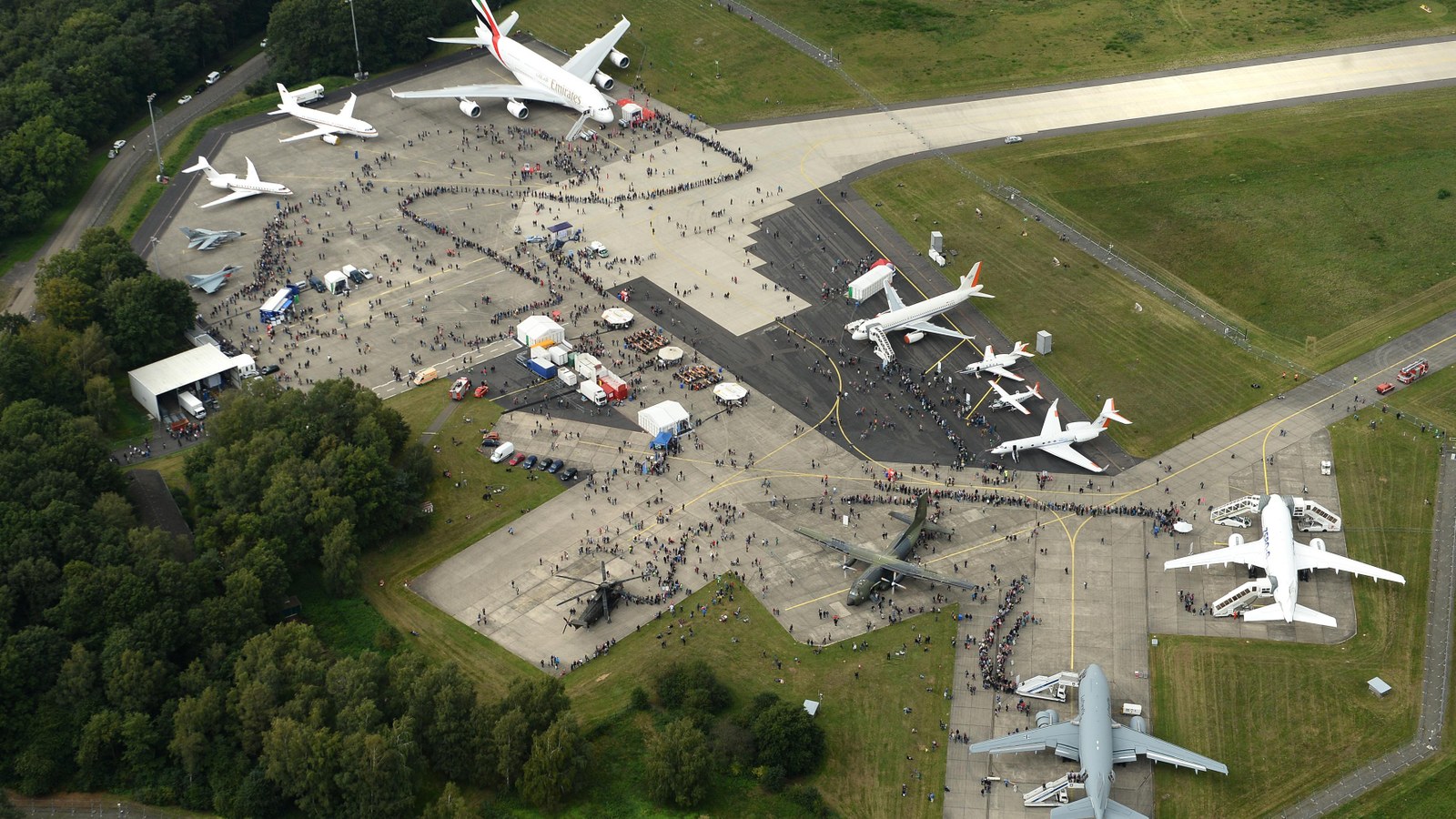More than 60,000 visitors at DLR for German Aerospace Day
Over 60,000 guests visited the German Aerospace Center (Deutsches Zentrum für Luft- und Raumfahrt; DLR) Cologne-Porz site on 20 September 2015 for German Aerospace Day. DLR and the European Space Agency (ESA), together with their partners, exhibited current research projects and missions in the fields of aeronautics, space, energy, transport and security.
Pascale Ehrenfreund, the Chair of the DLR Executive Board, was enthusiastic and said: "I am deeply impressed by the huge public interest in DLR's research. Marvelling visitors and children's eyes lighting up reveal the fascination exerted by science and engineering." Ehrenfreund added: "In many discussions, our personnel have answered countless questions. It is important for us to show what answers DLR can provide to global challenges."
The visitors learned about the DLR research aircraft fleet and were able to visit an Airbus A380; they were able to look over the shoulders of solar and space scientists, see a wind tunnel and visit one of the world's largest aerospace medical research institutions, :envihab. Astronauts, including German ESA astronauts Reinhold Ewald, Hans Schlegel and Alexander Gerst, who were trained at ESA's European Astronaut Centre, reported on their work and life in space.
"The research and development work carried out at DLR is crucial for Germany's scientific reputation, because only those who are technologically up-to-date are able to compete internationally," explained Brigitte Zypries, Federal Government Coordinator of German Aerospace Policy and Parliamentary State Secretary at the Federal Ministry for Economic Affairs and Energy. "In addition to the research activities presented here today from the fields of aeronautics, space, energy, transport and safety, DLR is also involved with children and adolescents, for example with its DLR_School_Labs. These activities encourage our young scientists of tomorrow."
'VIP Kids' on a discovery tour at DLR
For children, there was a very special programme – more than 1000 young guests were able to attend as 'VIP Kids', with children's guides showing them around institutes and laboratories, where they were able to ask the scientists questions and participate in cool 'hands-on' activities. The guides took the children to, among other things, a DLR research aircraft and the Institute of Solar Research, where they learned how to generate electricity from solar energy.
German Aerospace Day took place, not just in Cologne, but also on social media channels such as Twitter, Facebook and Google+, where numerous images and posts about the event were published. The hashtag for the event, #TdLR, was one of the top trends in Germany.
A look behind the scenes
Access to control rooms – such as the one from where the Philae comet lander is monitored and operated, and research facilities such as :envihab – is normally restricted and their doors are rarely open to the public. DLR’s space activities, including experiments in microgravity, exploring other planets and Earth observation allow us to learn more about the Universe. On Earth, findings from this work will benefit, among other areas, medical, environmental and materials research.
"DLR – locally networked yet globally active – is not only one of the most important research institutions in Germany, but also a technological innovator for the economy," said Garrelt Duin, State Minister for Economic Affairs, Energy, Industry, Small and Medium-sized Enterprises (SME), and Skilled Crafts and Trades of North Rhine-Westphaliastfalen.
In a large aircraft exhibition, DLR showcased many of its research aircraft, including the largest – the Airbus A320 ATRA – which researchers use to test and develop new technologies in aeronautics. For the first time, the new A310 ZERO-G, operated by the French company Novespace, was on show. DLR uses this aircraft, together with ESA and the French space agency CNES, for research in microgravity.
For efficient use of energy, it is important that it can be stored with minimum losses until it is needed. DLR energy research activities in Cologne focus on collecting heat from industrial processes for re-use. For example, high-temperature thermal storage can be used in existing gas and steam power plants, as well as solar and compressed-air power plants. In the CeraStorE building, researchers showed various possible options for storing energy in the form of heat or electricity. A highlight of energy research at DLR is a new test stand for large power plant gas turbines, which was on show for the first time.
The co-organisers of German Aerospace Day were Cologne/Bonn Airport, the German Air Force and ESA, who opened their European Astronaut Centre (EAC) for the day.



